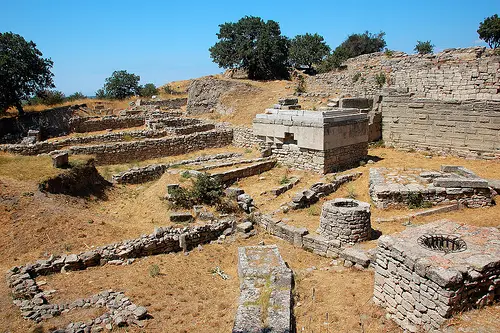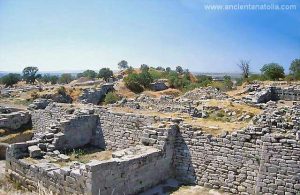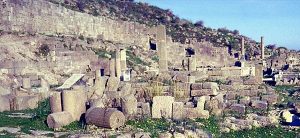The Ancient Greek Troy City which was also known as Ilion, Ilios, Latin Troia, Troja or even Ilium and which became familiar through Homer was subsequently excavated by an archaeologist named Heinrich Schliemann back in 1870.
Ancient Greek Troy City
This archaeological site so discovered by him now forms a part of Turkey and is known by the name Truva.

Facts About Troy City
The city of Troy found a place only in Homers Iliad and Odyssey as also in Virgil’s Aeneid. In Homers Illiad, this city was known as the place where the Greeks for a period of ten years in order to take revenge the abduction of Helen by the Trojan prince Paris.
As a result of this, it became difficult for the people to believe that the city of Troy was a fictional one and does not exist in the actual world. Till the early part of the 19th century, Troy remained as a fictional entity.
Strategic Location of Troy
The Troy which existed was also known for its strategic location. It was located between Europe and Asia. Due to this very reason, Troy also earned great power, especially in the Bronze age. In the 2nd as well as in the 3rd millennia BC, it emerged as a cultural center.

Trojan War
However, after the Trojan war, this city came to be abandoned between 1100 to 700BC. It was with the introduction of the Greek settlers around 700BC that this city came to be resettled in and was consequently called as Ilion.
Alexander the Great ruled this city around the 4th century BC. Thereafter, the Romans captured Ancient Greek Troy City around 85BC. This city was restored though partially by Roman General Sulla and called it New Ilium. During the rule of Byzantine, however, this city lost its importance.
This crucial task of removing the rigid belief from the minds of the common masses that Troy was not a mere illusionary figment of their imagination but a place like that really existed vested on the shoulders of a rich businessman and an amateur archaeologist named Heinrich Schliemann. He was German.

Following Heinrich Schliemann, Wilhelm Dorpfeld around the year 1893-4 and Carl Blegen around 1878-9 also commenced their excavations. The results of these excavations pointed out to the fact that the city of Troy was broken down and restructured as many as nine times one above the other.
Blegen, further stated on record that these nine levels could further be subdivided into forty-six sublevels.
University of Cincinnati
Since 1988 again excavations have been undertaken jointly by a team from the University of Tubingen along with the University of Cincinnati under the guidance of Professor Manfred Korfmann with Professor Brian Rose along with coast of the Aegean Sea at the Bay of Troy. This team re-established the fact that the site so excavated was indeed the city of Troy.

Subsequently, the permission to continue the same excavations was also permitted to Ernst Pernicka who was Korfmanns colleague though given under a different digging permit.Trojan, unarguably finds an important place as far history is concerned.
From the leaders like Alexander the Great to Lord Byron, numerous eminent figures of the world history have stood on this very site and went on to become great heroes thus making this place a landmark in the world history.